But, as with any Ferrari, the link between racing and road cars is ever present. While the sublime coachwork of the older car embraces a highly tuned engine and competition-derived chassis, its younger descendant is similarly potent and likewise much, much faster than might be assumed.
The Ferrari California you see here carries a 4,300cc, 460bhp V8 and has the ‘whizz’ if not quite the ‘bang’ of the whizz-bang 458 Italia. The company has recently launched an updated version, now with 490bhp and a 30kg reduction in weight. As a £987 extra, buyers can specify the stop-start (‘HELE’, for High Emotion Low Emission) system, as fitted to our highly optioned ‘F1 CAL’.
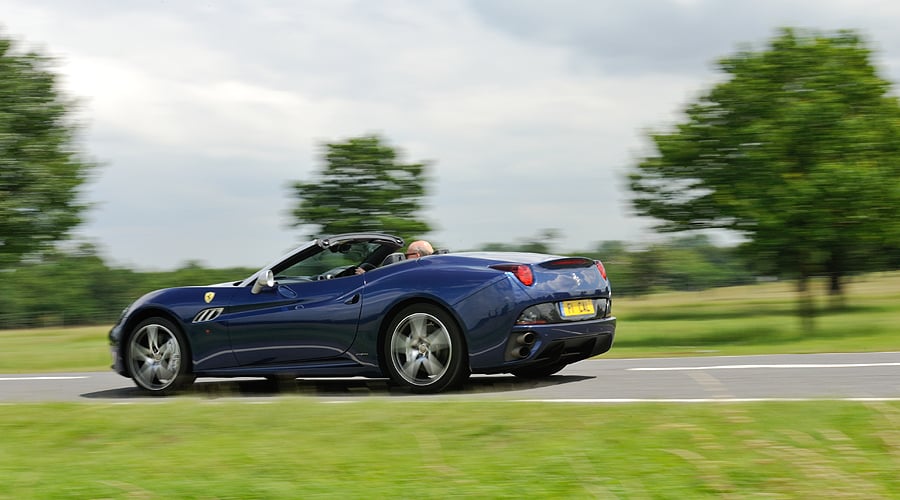
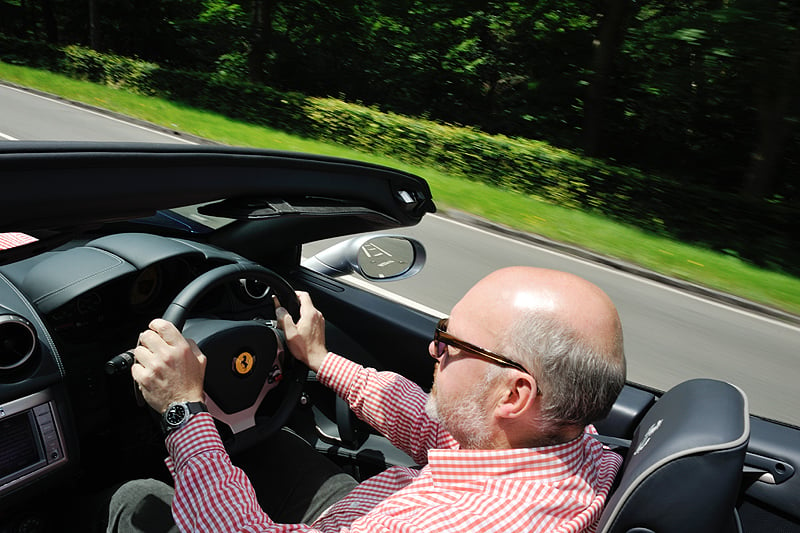
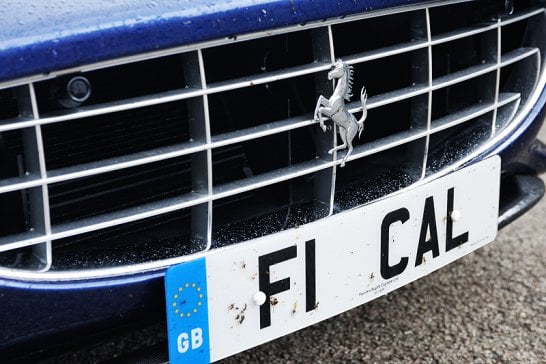
A journey to Le Mans for either the annual 24 Hours or the biennial Le Mans Classic is a good test of a car. After a 900-mile round trip (driving solo this time), one soon gets to know the foibles of what might be the most exhilarating machine on paper: how is it to park in unfamiliar hotel grounds… how much luggage can you stow securely… why can’t I get into the boot... and, predictably, do I need to fill it up AGAIN before I get there?
Well, the good news is that with the exception of the boot (its mechanism only released externally by a reluctant remote control), the car passes all of these criteria with honour. There’s masses of internal storage space and, if you add the more-than-generous, beautifully upholstered space behind the front seats to a 340-litre boot (roof up), enough room for a week’s holiday for two.
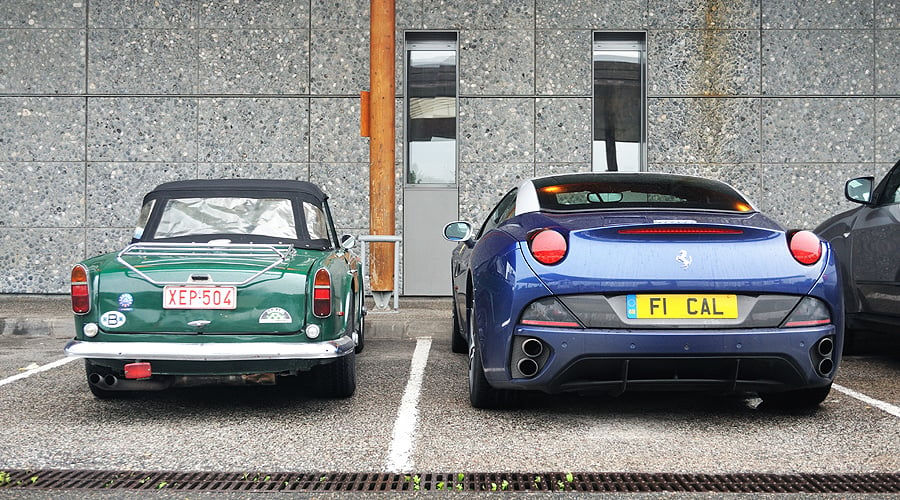
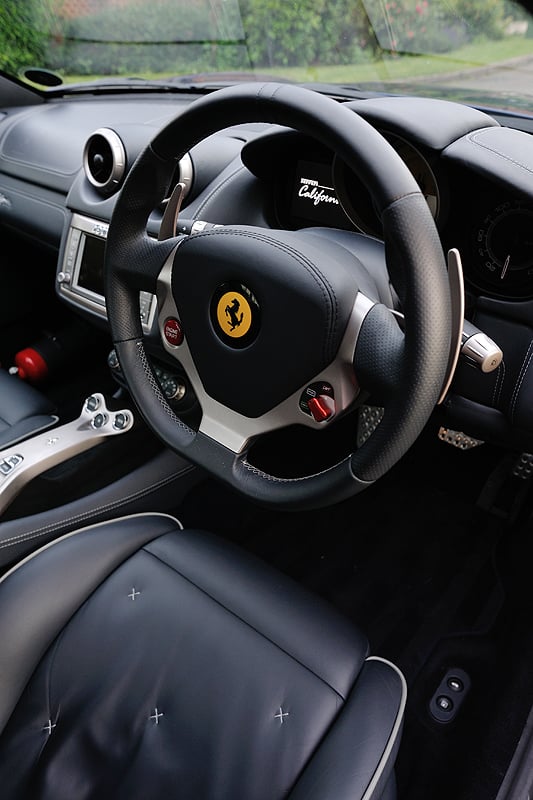
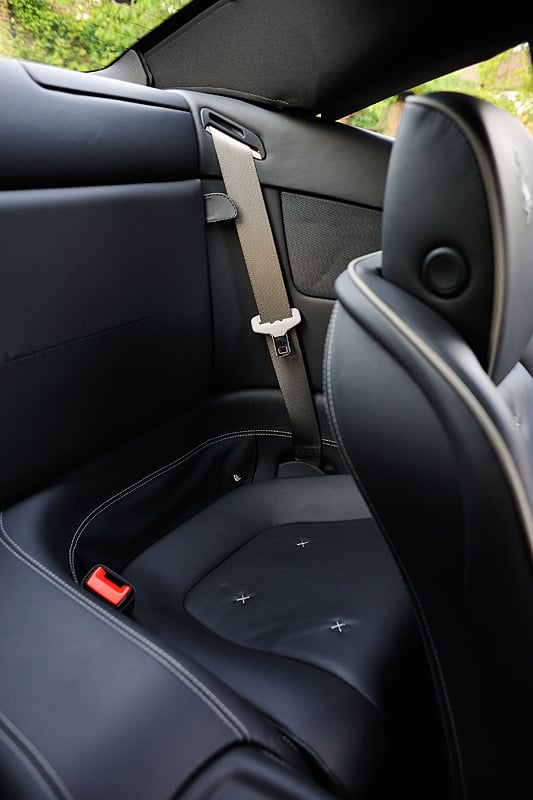
The Blu Scuro interior of this car, with £4,152 ‘Kennedee’ stitched crosses, is superb. And the combination of the highest-quality leather, along with turned or cast alloy and Alcantara for the central ‘flying spine’ and other parts of the cabin make it one of the best you can get. Dipping impressively deeply into the options list, this car has been specified with matching dark blue leather on the headlining, A-pillars, steering wheel and other areas normally finished in either plain black hide or Alcantara.
It is utterly gorgeous, and matched externally by traditional Blu Tour de France metallic paintwork topped by an optional (£4,800) Argento Nürburgring roof. And let me say that from now on, for the sake of clarity, I won’t be sprinkling the price of options throughout this review.
Apart from the driving experience, part of the fun of Ferrari ownership is building your very own car. Visit one of the company’s ateliers and let your imagination run riot (with an eye on the running total; the results you see here added £55,571 to the £152,086 list price, for example).
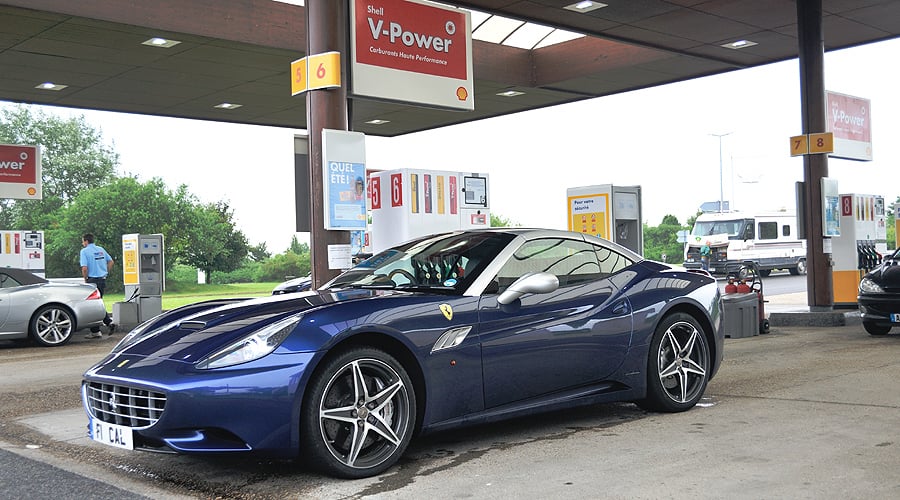
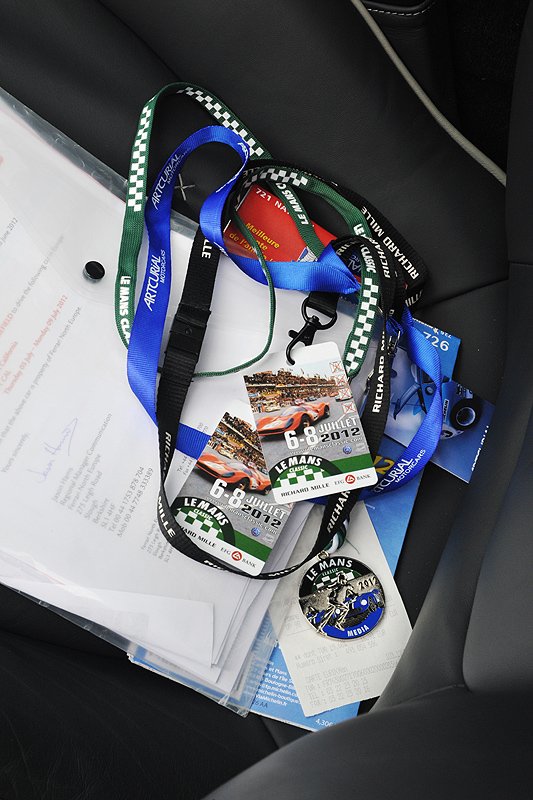
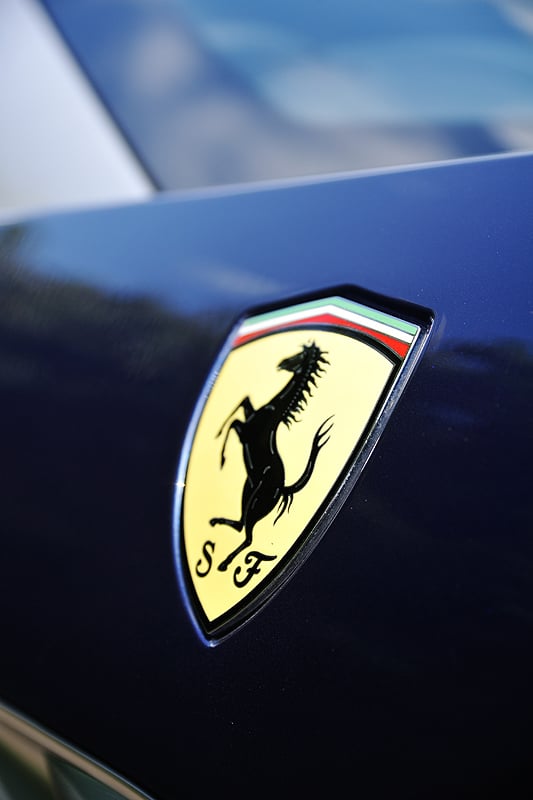
So, sinking deeply behind the wheel with its familiar Manettino adjustment for Comfort, Sport and Track, pressing the throttle and taking a few pulls on the right-hand paddle, what happens? Was that £207k well spent?
Put simply, after 900 miles, I am now on speaking terms with every one of this car’s 460bhp. Ferrari’s engines are legendary, and this one makes the California go like a rocket. Peak torque of 485Nm comes in at just under 5,000rpm, so the high-7000s redline is a nice thing to have - but not needed for everyday driving. The seven-speed, twin-clutch gearbox matches the delivery of the motor to perfection: at a 140km/h cruise on the Autoroute in seventh, the engine is spinning at just 3,000rpm, yet producing 420Nm of torque.
Click down a couple of gears and there’s all the performance anyone could reasonably wish for, delivered in a still exciting, yet safe and predictable manner. It’s a real mile-coverer and easy to trundle in the very good automatic mode around town. The touchscreen satellite navigation, communications and media centre will get you to - and around - that town efficiently, too.
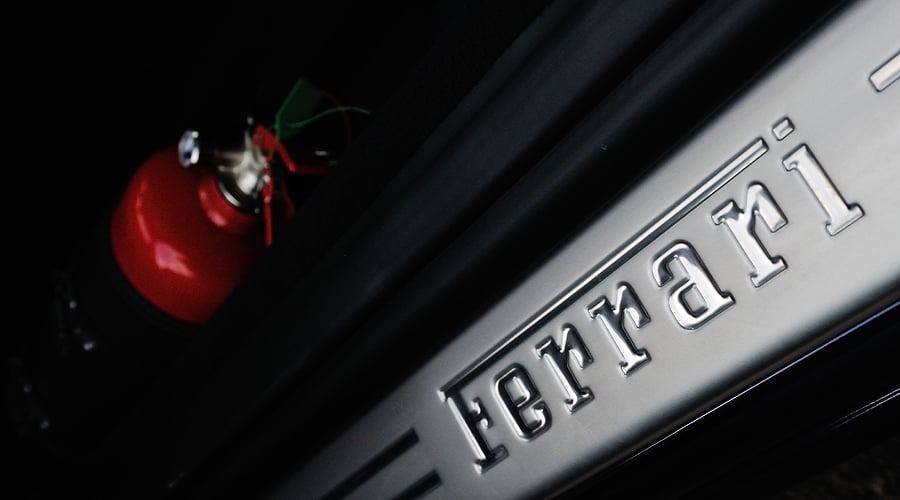
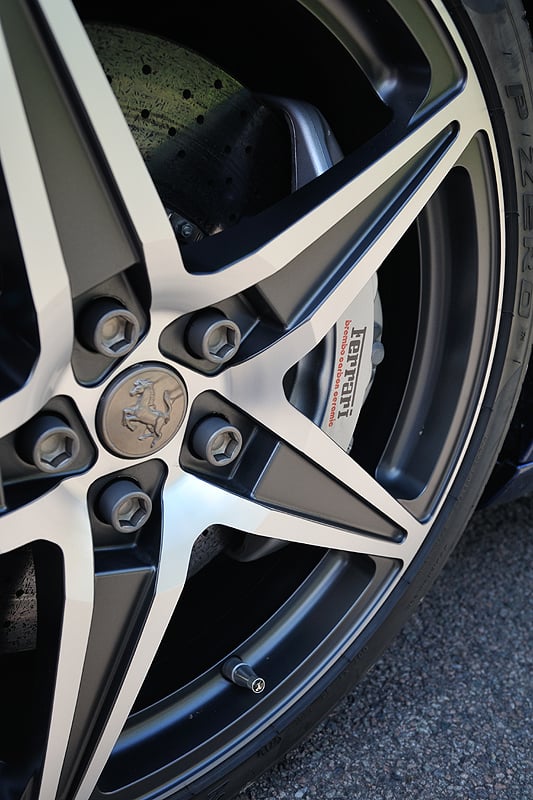
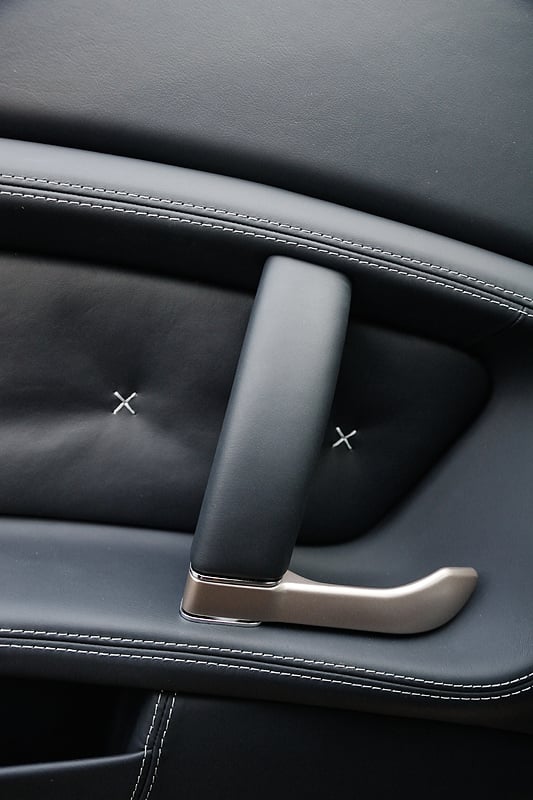
Yes, the prospect of 700bhp+ in the new Ferrari F12berlinetta is quite amazing. But give me (and I don’t mean just promise me…) 460bhp to 490bhp and I’m happy.
As you’d expect, the handling is superb, with the steering a touch slower than that of the electrifying 458 Italia (a car that, until you’ve driven one, you can’t really prepare yourself for) and the optional magnetorheological dampers that react instantly to a change of the Manettino or more press-on driving. It might come as a surprise to drivers of wide-wheeled sports cars with poor suspension travel, but even with this car’s 20in alloys, you can actually feel it riding the road.
Ferrari’s commitment to engine efficiency has seen dramatic reductions in CO2 emissions and fuel consumption right across its range. The stop-start system on the California cuts city consumption by up to 15%, so the company says. You get the choice of switching it on or off completely and there’s no default ‘on’ at start-up. I used it most of the time and I have to say, coming from a stop-start-equipped Audi A6, I really liked the efficiency of it all. By the way, the system functions immediately; there’s no warm-up time. Once I’d left the hotel for another 20-minute drive to the circuit, at every red light the motor died and was instantly reignited when my foot slipped from brake to accelerator.
And overall consumption? Around 20mpg for the four days I had the car – how much of that is HELE, I’ve really no idea, but I’d order it for the new car that, should I be in the market for a generous two-seater with strong performance and unmatched pedigree, would be a Ferrari California – one of the best new cars I’ve driven in recent years.
Postscript: Researching Ferrari’s GT record at the 24 Hours, I came across the story of the 1963 race, and the second-place-overall 250 GTO (chassis 4293 GT, present at the Le Mans Classic for the 2012 250 GTO Tour). Entered by Ecurie Francorchamps, the red car was refilled the Monday after the race then driven to Paris for a night on the town. The following day it took to the roads again for a homeward journey to Brussels. A typical story of Ferrari racing endurance and Ferrari style. Just the sort of trip you could make in a California.
Photos: Joe Breeze / Classic Driver















